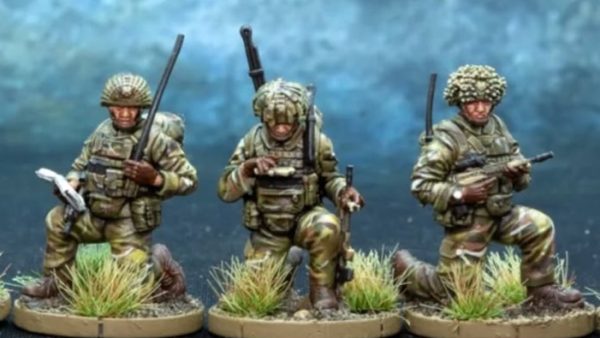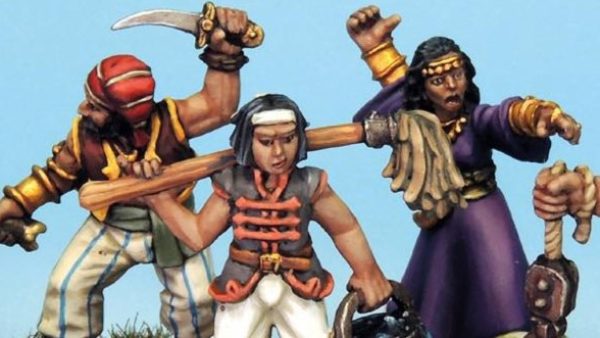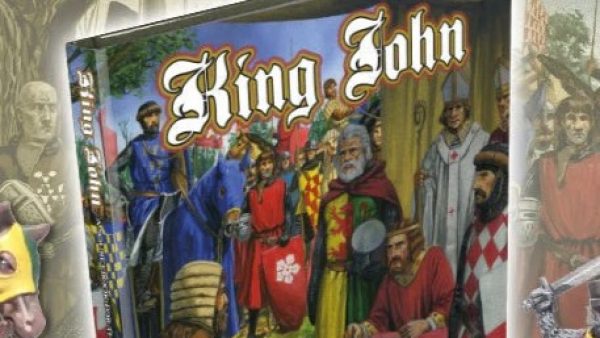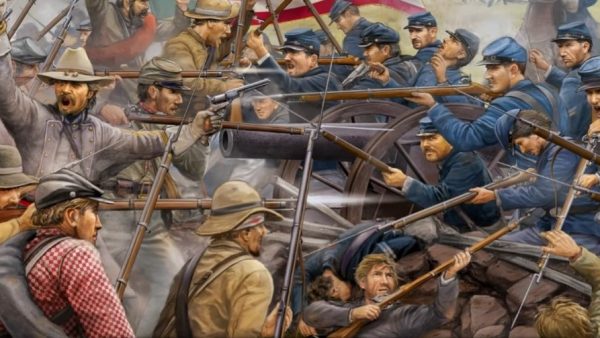Book Review: Palace of the Plague Lord
September 9, 2010 by lloyd
Palace of the Plague Lord
By C.L. Werner
The authors of the Black Library are undeniably skilled at conveying the dark nature of the Warhammer universe, but even among this group dedicated to the grim atmospheres of Fantasy and 40,000, C. L. Werner deserves recognition. Creator of the popular Mathias Thullman Witch Hunter series, Werner’s style of Lovecraftian horror and skill at creating an atmosphere is undeniable. Palace of the Plague Lord is possibly a perfect example of this skill, containing as it does many of the aspects which C.L. Werner’s books generally contain. Character driven and possessed of some truly impressive descriptive passages, Palace of the Plague Lord is a brilliant fantasy adventure, set deep within the realms of the Chaos worshippers.
The book follows the journey of Einarr Sigdansson, a disgraced Norseman whose actions bring about the destruction of his clan, as he travels to take a powerful artefact from the clutches of the Plague Lord Skoroth. Driven on by guilt and promises of a chance at redemption, Einarr journeys from the cold lands of the Norse to lands of the plague worshippers of the Hung, accompanied by companions from nearly all the walks of life that the followers of Chaos tread.
A defining feature of Palace of the Plague Lord, and one which is present in much of C.L. Werner’s writings, is its character driven nature. As the plot progresses many new characters are introduced to us and much of the story concerns itself with their interactions with one another. The book relies heavily upon the characters for plot progression, and they also provide a good deal of suspense, in that many of their motives remain unclear to the reader. A line spoken by one of the books characters possibly sums up the nature of the character interaction best:
“When you played your games of treachery you didn’t realise I was playing too.”
A refreshing feature which the C.L. Werner has provided is the change in perspective of the warriors of Chaos. Where they are mostly portrayed as being inherently evil, concerned only with destruction, the author has managed to break them free of this typecast and show that it isn’t because they are evil that they act this way, but rather because it is their culture. The men of Chaos are not the only ones Werner has managed to free of established stereotypes. The ogre Thognathog also goes some way towards removing ogres from their established role as the comic relief of every book they are in, and more towards how they are portrayed in their army book.
Another important aspect of the book is its descriptive passages. C.L. Werner holds a reputation as a Lovecraftian horror writer, and this book more than lives up to this expectation. From the forever shifting blood beast of Khorne near the start, to the maggot/toad/worm/I-don’t-know-what deamons of Nurgle, Werner’s graphic (and frighteningly twisted) imagination never lets him down, and indeed can be said to provide many points of inspiration to those looking for ideas for Chaos conversions.
However, it is in conveying the repugnant nature of a realm touched by Nurgle that Werner truly excels in. From the rotting nature of the ground and its inhabitants, to the leprous, urine coloured skies, to the walls of living flesh which make up the Plague Lord’s palace, Werner creates an image that at times can almost leave you feeling truly disgusted. In this book, Werner has succeeded in creating a realm that Dante would have given his right arm to describe.
All in all it is hard to find much wrong with this book. The main complaint I would have is that it is hardly original, following as it does the standard structure of a group on a quest for some mystical object, and closely resembles other works of Werner’s, such as Runefang. However, this quest structure is rather hard to break free of in the fantasy genre, and most classics used it as their basis. The Lord of the Rings can be seen as the definitive example of this form.
The only other aspect which people might pick up on is the story’s rather ambiguous ending. It is hard to say whether this is a good point or a bad one. It definitely fits with the story and Warhammer lore as a whole, but could leave a reader feeling somewhat cheated.
In conclusion, Palace of the Plague Lord is in my own opinion one of the best examples of dark fantasy to be produced by the Black Library in recent years. While not ground breaking or original, it still provides a very entertaining read, and I would definitely recommend it to anyone looking for something that isn’t too challenging. If this doesn’t sell it to you than maybe this will: there’s a Chaos Dwarf in it. Oh how I’ve missed those evil little gits.
BoW Sam
Pro
+ Interesting characters
+ Very good descriptive passages
Con
- Not very original
- Ambiguous ending (I’m putting this as bad as it may put off some readers, although I thought it matched the story well.)




































![Very Cool! Make Your Own Star Wars: Legion Imperial Agent & Officer | Review [7 Days Early Access]](https://images.beastsofwar.com/2025/12/Star-Wars-Imperial-Agent-_-Officer-coverimage-V3-225-127.jpg)







































Seems interesting might give this a read if i can get my hands on it, however i don’t think i will have the time with the masses of work i have to get through. Still i will try the fantasy chaos gods demand it.
Borrowed it off a friend…
Great book….
Gives a great look into a hero rising in the far north, with a twist 😉
I read it a while ago and I really liked it, especially the twist ending
Book reviews? Awesome! I’ve been wanting to pick this one up!
Read this one over 12 months ago now. Picked it as a change of pace from my usual mainstays of Gotrek & Felix & Witchunter novels from the Black Library. I found this book to be a very interesting, exciting and intriguing book, if what sometimes disturbing. The ending is what makes the book. Sometimes the ”ideal” ending is not always the best. I can also see the reference to the Lovercraftian style, who has long been my favourite horror author and probably the reason why I took to this book so easily. A real gem amongst some of the other ”horrors” of the Black Library! 5/5
That cover is a really old bit of GW artwork there by Les Edwards. He did the Heroquest box cover which happens to be one of my favourite pieces of GW art. The original pic of this is wider and has a random Chaos Space Marine marching with the Warriors. Kind of cool, like he popped out of the warp in the wrong time period or something.
I’ve been avoiding this one because I’m a little bit “on the fence” when it comes to Werner’s books. The problem with “character driven narratives” is that the characters actually have to be interesting. I felt that he came up a little short on that with ol’ Mathias Thullman.
He does a good job with setting and whatnot, I just feel that there are more “mature” writers on the BL roster and I tend to avoid Werner. If even half the energy he spent on crafting creepy settings was spent on thinking through characters that came off a little less cliche, he’s be one of my top choices.
Have you read Grey Seer and Temple of the Serpent? The characters are really interesting in these I think.
yeah I noticed the plague marine on the front too. I ment to put it into my review but forgot to. It baffled me then and it baffles me now, although I like your reasoning of him getting lost in the warp. Any way I should be getting more books to read soon so keep an eye out for more reviews.
i think you are a bit harsh there tony, i love this book, and i must have read almost all of this guys books as well, and yes mathias is a bit on the dull side if you look at the side characters but its a good read. but palace of the plage lord is a different animal. it has lots of characters that anyone can relate to..if you can relate to a 8 foot ogre or a 4 foot 5 chaos dwarf. but you get my point. much more colour in this book. all be it urine yellow and leper green
On a side note guys I just noticed that the adverts the other BoW guys have put up here are for books by Terry Brooks. Go for it, he is a great fantasy author. read his book Sword of Shanara a few years ago, loved it.
gross cover, I am currently into the dark blade omnibus and its siiiiiick!